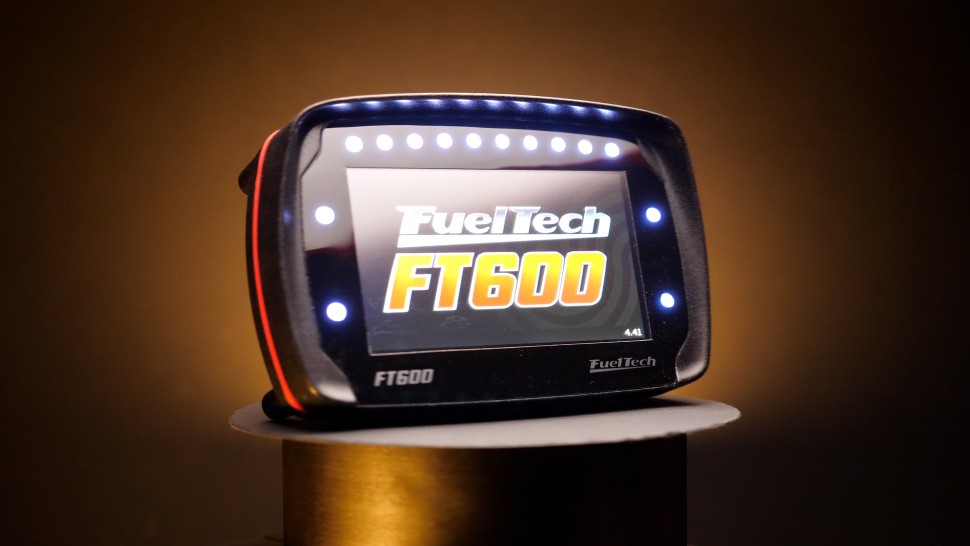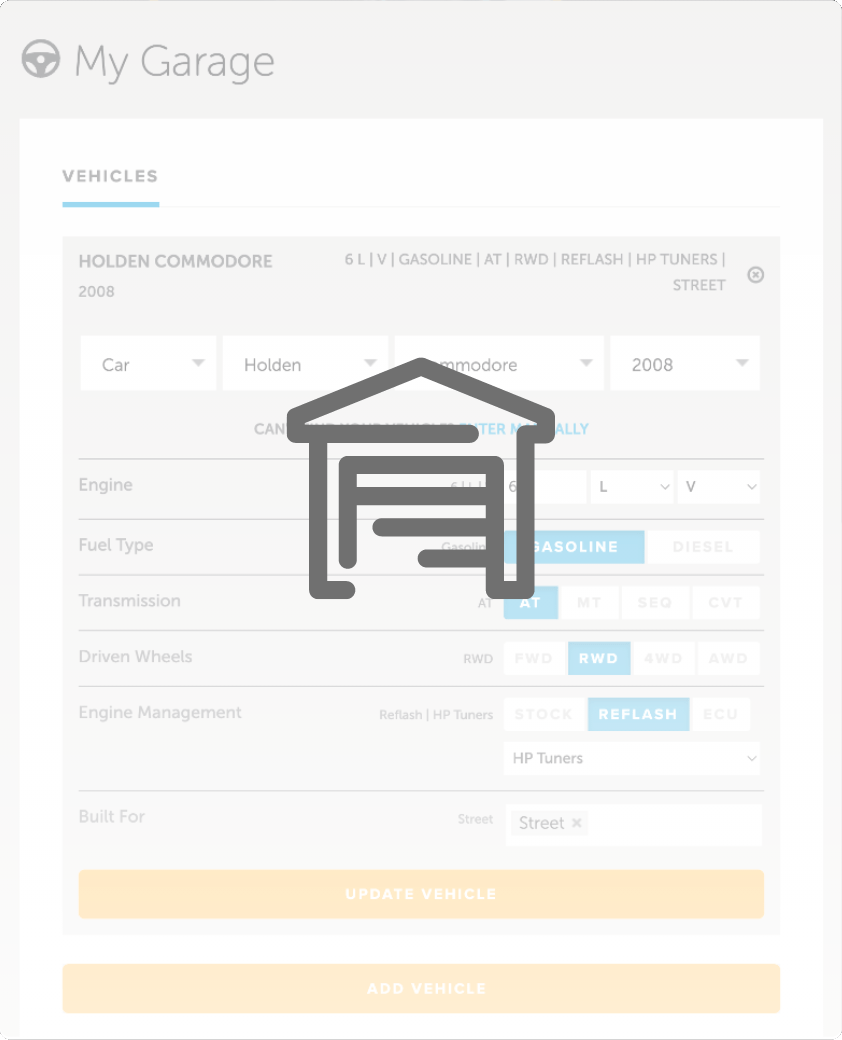| 00:00 |
The very first step of our 10-step process is to configure our ECU and check our inputs and outputs.
|
| 00:06 |
Now, obviously with the Sniper 2, this is dramatically simplified compared to the rest of our worked examples, but we're going to go through the process anyway and cover off what needs to be dealt with.
|
| 00:18 |
I'm going to begin this with our laptop tuning software connected to our Sniper 2 and I thought a good place to start with this would actually be to just go through the process of finding and downloading the laptop tuning software because for those who are very new to this, that in and of itself can be a little bit daunting.
|
| 00:37 |
So, if we jump across to my laptop screen, I'm just on Holley's website, holley.com, and what we want to do is scroll all the way down to the bottom and we're looking for their technical resources which we will find right here.
|
| 00:51 |
So, if we click on technical resources, this will take us to the resource page and we need to work our way through to what we're actually after.
|
| 00:59 |
We're going to start by clicking here on fuel injection.
|
| 01:03 |
Following this we obviously want to select the unit that we are dealing with, our Sniper 2, and then we'll have all of the software and quick start guides available for the Sniper 2.
|
| 01:14 |
And what we want to do is actually come down here and click on the Sniper 2 EFI software.
|
| 01:19 |
In order to install the software, all we need to do is click on the Sniper 2 EFI software link and that's going to download that to the downloads folder in our laptops, we'll just allow that to go through now and then we can install it.
|
| 01:35 |
And we'll see that that will download, got a few of those already in my downloads folder so we'll just click on one of these and we need to start by removing our protection and running that exe file and then simply follow the prompts to install the software.
|
| 01:50 |
Once our installation's complete, the software will automatically launch and we can see we've got a few options as to what we're going to do now.
|
| 01:57 |
Starting from scratch here, there's a couple of ways of creating a new configuration or calibration.
|
| 02:03 |
Given how stock our particular vehicle is, we're going to start by opening an existing config file and work from there.
|
| 02:10 |
And what we'll do is we'll go into the base configs, or base cals, and these are named to give a reasonable understanding of what they sort of would be suitable for.
|
| 02:19 |
Our one is going to nicely fit here with our stock cam file so we'll double click on that to open that up.
|
| 02:26 |
When this opens there's not really anything necessarily to see.
|
| 02:29 |
We've got a bit of navigation here of the Holley software.
|
| 02:33 |
We've got these little icons across the top here which make it really easy to navigate through our different tuning screens and our different options.
|
| 02:42 |
What we actually want to do here though is start with our system ICF, we'll click on that, and this gives us our system parameters.
|
| 02:49 |
So, this is important for adjusting our configuration to suit our particular application.
|
| 02:55 |
So, very simple here compared to most aftermarket standalone ECUs, not a lot of options that we're going to need to adjust and most of these here are actually already correct for our application.
|
| 03:07 |
Obviously we want to start by making sure that the number of cylinders is correct.
|
| 03:11 |
This is an 8 cylinder engine so we're good to go there.
|
| 03:14 |
Likewise, the engine displacement and again we are a stock 350 cubic inch V8.
|
| 03:21 |
And then we've got our cam type here which as we've already discussed is stock.
|
| 03:25 |
If we look at our little drop down menu here, this is stock, mild, street, strip or race.
|
| 03:30 |
So, you can kind of figure out from how aggressive your cam is really where that's going to end up falling in those options.
|
| 03:38 |
Now, how this is used though is to really generate our base volumetric efficiency table.
|
| 03:43 |
So, it's not going to necessarily be perfect anyway but if you've got a race cam and you choose stock in this drop down menu, it's likely that your fuelling, particularly around idle, is going to be very very rich and possibly too lean under load.
|
| 03:59 |
So, it makes sense to choose something that's going to actually suit our application.
|
| 04:04 |
Next, we've got our ignition and here again we've talked about the options.
|
| 04:09 |
So, if you are running the stock distributor, we're just going to end up triggering off the coil negative.
|
| 04:15 |
So, really the Sniper 2 doesn't have a trigger input as such, this is just giving an RPM input so it knows what the engine speed is.
|
| 04:24 |
If we look at our drop down menu, as we've already discussed, we've got our hyperspark digital or electronic distributor so we're going to choose that.
|
| 04:32 |
We've then got a couple of other options that pop up regarding the reference angle which is a way of calibrating the ignition timing as well as our inductive delay.
|
| 04:41 |
I'm going to leave those for the moment and we'll deal with those a little bit further on.
|
| 04:46 |
Lastly on this particular page here we've got our output setup which is our dwell for our ignition system.
|
| 04:52 |
So, we can have a dwell table or alternatively just a single value which we can see here.
|
| 04:58 |
And the hyperspark installation manual will give you the recommendation for the correct dwell which in this case for our application, 4 milliseconds.
|
| 05:08 |
The dwell time is going to be relevant to, or relative to the coil that you're using but somewhere in the region of 2.5 to 3.5 milliseconds is generally going to be somewhere in the ballpark of what we would expect to see.
|
| 05:22 |
Now, we've got our base engine parameters out of the way, that's actually the bulk of our configuration and setup here but we'll go through the remaining options as well.
|
| 05:31 |
So, we'll come over here to the left and we're going to click on our EFI parameters.
|
| 05:36 |
And again not a lot to adjust here given that everything is really defined by the Sniper 2 so we've got our system type which is a Sniper with four injectors.
|
| 05:46 |
The fuel is important here, obviously we're running on gasoline for our worked example.
|
| 05:51 |
And the other part that's important here is making sure that the actual system fuel pressure is correctly set.
|
| 05:56 |
We'll go through this in a future step but we want to just be mindful that when we are adjusting the fuel pressure regulator, we're matching what we've got in here or vice versa.
|
| 06:06 |
We've got our map sensor which again for simplicity, everything is inside of the Sniper so we've got an internal sensor.
|
| 06:15 |
Likewise, all of our fuel injector parameters, these are really predefined, there's nothing to adjust here because the Sniper 2 comes with the injectors already fitted so that's just exactly what we're dealing with.
|
| 06:26 |
Next, we'll come down to our basic input and output setup and we've got some options here.
|
| 06:34 |
Again, in our installation, everything's really nice and easy here, we don't have electric thermo fans so I'm going to untick those two boxes, we're running a conventional viscous fan driven off the front of the engine.
|
| 06:47 |
Likewise, this definitely doesn't have air conditioning, if you're hot you just need to wind the windows down so we can disable all of our air conditioning setup here.
|
| 06:56 |
But of course if you do have these parameters, you can adjust them to suit the fans in particular there, we can obviously just adjust for two separate fan outputs, what temperature they're turning on and what temperature they're turning off as well.
|
| 07:09 |
As we can see we've got the specific output that's going to be used for those.
|
| 07:13 |
We've also got the option of adding a secondary fuel pump and no prizes for guessing here, not relevant to our particular installation.
|
| 07:22 |
Next, we're going to come down to the last option which is our closed loop and learn.
|
| 07:27 |
And this is really one of the key parts of the Holley Sniper 2.
|
| 07:31 |
So, a few options here, so first of all we can see that a closed loop is already enabled by default with this configuration.
|
| 07:39 |
We can also enable a minimum coolant temp for closed loop.
|
| 07:43 |
And traditionally if you're just using the hand controller, this is set at 160°F.
|
| 07:48 |
So, I'll just match that.
|
| 07:50 |
We can also set some RPM and throttle position parameters into control when the closed loop will be active.
|
| 07:59 |
Here again we're just going to be replicating the way the hand controller would work and we're wanting to really have closed loop control everywhere.
|
| 08:07 |
Now, this is the default settings for our closed loop compensation limits which is a lot.
|
| 08:13 |
This is going to allow plus or minus 100% fuel trim.
|
| 08:17 |
And this is potentially an area where you could get yourself into trouble.
|
| 08:23 |
I'm going to start with these set at plus or minus 100, Holley's default but certainly once I've got the tune closer I'm going to come in here and set these to something much more appropriate.
|
| 08:34 |
And by appropriate I mean that in the idle and cruise areas we might allow perhaps plus or minus 15%, maybe plus or minus even 20% at idle where we could be suffering from some heat soak.
|
| 08:46 |
Particularly once we get higher in the load, I'm probably going to want to limit that to maybe plus or minus 5% and if we need more trim than that, really that means that we need to go back and do a better job of our VE tuning anyway.
|
| 09:00 |
Now, we'll move over to our learn parameters here and have a look at these.
|
| 09:06 |
So, how this works is that we have our closed loop control that we just looked at.
|
| 09:11 |
You could think of this like a short term fuel trim.
|
| 09:13 |
So, if our air fuel ratio is richer or leaner than our target, the short term fuel trims will act to bring that into line.
|
| 09:20 |
But over time the short term fuel trims from our closed loop will then be transferred to our learning table and this actually allows another plus or minus 100%.
|
| 09:31 |
So, the range of control that this has is actually crazy by default and again we shouldn't need anything like this.
|
| 09:39 |
The key with the fuel learning is that the values that are stored into the long term learning table will remain there even when the key is turned off and the ECU is powered down.
|
| 09:52 |
So, what this means is that over time, the more we drive the car, the more our short term closed loop trims are transferred into this learning table and if everything's working right, what this should mean is that the short term or closed loop fuel trims have a lot less work to do.
|
| 10:07 |
So, we ideally should see our short term fuel trims sitting maybe plus or minus 2% or 3% which is pretty typical for a well tuned car.
|
| 10:15 |
We might see more like maybe plus or minus 15% or 20% coming from our learn table.
|
| 10:22 |
And once we've driven the car enough and our learn table is dialled in, everything's driving really nicely and our short term fuel trims are close to that plus or minus 2% or 3%, we can actually transfer the learn table onto our VE table.
|
| 10:35 |
So, this is how this auto learning or self tuning actually works.
|
| 10:40 |
Again, don't worry too much about it because we will see that in action as we go through the course.
|
| 10:45 |
Now, looking at our other parameters here, we've got our base learn gain, fuel learn gain.
|
| 10:51 |
So, essentially how aggressively it will chase or transfer the short term trims across into our fuel learn table and then we also have the ability to have an RPM and TPS parameter as to when that learn table is going to start becoming active and start working.
|
| 11:07 |
Now, let's have a quick look at that table.
|
| 11:09 |
If we come over here and click on our little fuel injector icon, this will give us our VE table, so this is being generated based on the parameters that we've just looked at, engine capacity, fuel, etc.
|
| 11:24 |
And if we come down here we can see we've got our learn table and if we click on that, obviously at the moment it's populated with zeroes but we've got quite a high resolution 3D table there, manifold pressure versus engine RPM and as we drive the vehicle this is going to end up populating with those learn values and then of course we have our transfer learning to base icon.
|
| 11:48 |
Alright, at this point it's time to actually send this calibration through to our Sniper 2 and then we can actually make sure that everything we're seeing in terms of sensor readings actually makes sense from the Sniper as well.
|
| 12:00 |
So, what we'll do at the moment is we'll just key this on and what we're going to do here is come up to our sync with ECU icon here and we'll click that.
|
| 12:11 |
When we click that little icon we get this pop up here which immediately compares the data on our laptop to the data in the Sniper and of course because of what we've just done here we can see this little message saying that the ECU config does not match.
|
| 12:24 |
So, we've got options here, particularly if we wanted to retrieve the calibration or tune out of the ECU, we can click on the get from ECU button down here at the bottom but in our case what we want to do of course is send our fresh calibration or configuration to the ECU so we'll click that and what we can see now is everything's being sent through.
|
| 12:45 |
Now, the pop up here does say that the ignition power must be cycled for the changes to be updated.
|
| 12:51 |
So, we need to do this before we actually start the ECU, or start the engine I should say.
|
| 12:56 |
So, I'll just cycle that now and we can click close.
|
| 12:59 |
Alright, now that we are actually live with the ECU, we can see a few other parameters here.
|
| 13:05 |
We can see at the moment on the sensor screen, all of the sensors being displayed, sensor values, we can also see that while we're on our learn table here we've now got a little cursor showing where we're actually accessing, if we go back to our base fuel table we can see that's still the same.
|
| 13:21 |
And we can click here on our gauges panel to show all of our gauges and what we want to do is basically just make sure that the sensor inputs actually make sense.
|
| 13:31 |
Again, this is almost a guaranteed result here because everything is really configured into the Sniper 2 by default from the factory so there's not a lot of room for error in terms of choosing the incorrect sensor setting.
|
| 13:44 |
But we still want to just make sure that everything does check out here.
|
| 13:48 |
So, for a start here we've got our coolant temp sensor and that's reading 106°F.
|
| 13:55 |
We've had this engine running already today, our RPM is not showing anything, obviously the engine's not running, it's stalled, we've got our air fuel ratio which we really can't take much notice of until we've actually got the engine up and running.
|
| 14:07 |
We've also got our air temp and that's reading 85°F.
|
| 14:11 |
A good sanity check here as well is that if we've freshly installed this ECU, the engine hasn't been running.
|
| 14:19 |
When we first power everything up before it started running, we should probably find our intake air temperature and coolant temp match within probably about 5°F.
|
| 14:29 |
Also got our manifold absolute pressure, we want to make sure that that is reading close to 100 kPa.
|
| 14:35 |
Obviously this will depend a little bit on our barometric pressure.
|
| 14:38 |
And then finally we've got our throttle position sensor here and if I cycle our throttle we can see that that does in fact move quite nicely between 0 and 100%.
|
| 14:49 |
So, this stage all of our sensor inputs are reading correctly and our configuration is complete.
|
| 14:56 |
During this step I would normally also go through the process of testing our outputs.
|
| 15:01 |
It's not an option we have available on the Sniper 2 but essentially in the same vein that the inputs are all preconfigured because they all come with the unit.
|
| 15:11 |
We can say exactly the same for the outputs.
|
| 15:13 |
Obviously we did touch on some of the auxiliary outputs we can wire up such as thermo fans but again we don't have a test output option for those.
|
| 15:22 |
So, we're going to close this down now and we'll move on and have a look at how we can go through this process with the hand controller.
|





